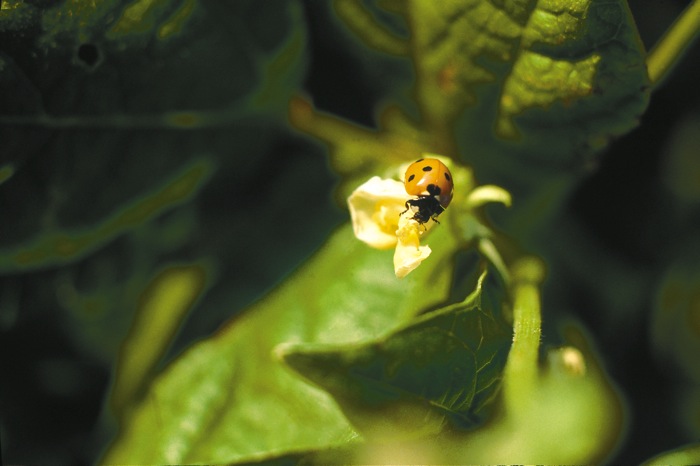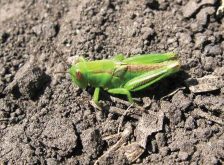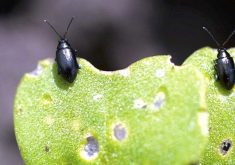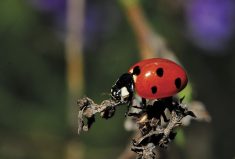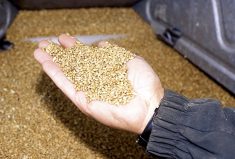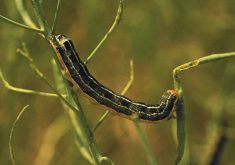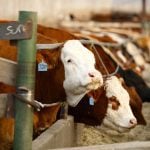Prevention — not eradication — is the trick to managing pest outbreaks in crops, says a B.C. government entomologist.
“In integrated pest management, pest suppression is truly the goal,” Tracey Hueppelsheuser said at a workshop in late July.
“The end goal is to limit pest outbreaks and impacts — not completely remove them, but limit them. You’re expecting that if you can keep them down to a dull roar, then you’ve had success.”
In any ecosystem, good and bad bugs alike play an important role, she said.
Read Also

Low yield allowance adjusted to support farmers in Alberta
Alberta farmers can move more quickly to salvage poor crops for feed, after the federal and provincial governments announced increases to AFSC’s low yield allowances for the 2025 crop year.
“Insects do a lot of good for us. It’s not all bad,” said Hueppelsheuser.
“You’ve got to know the good bugs from the bad bugs — know who’s out there to help you and who’s causing you trouble. If you kill all the good guys, you’ll inherit their job.”
But like any organism, insects need a suitable environment to thrive, one that often conflicts with the goals of growers.
- More from the Alberta Farmer Express: Time to start counting bugs for next year
“The goal in our agriculture systems is to optimize and maximize the ecosystem resource to produce the greatest amount of harvestable product,” she said.
“And with any organism that takes this yield potential away and is competing with us, we consider it undesirable.”
Complex ecosystems tend to be more balanced, and manage pests so “no organism gets out of control or takes more than it should,” she said.
Simpler systems, such as those seen in annual agriculture crops, are less balanced, creating the perfect environment for insect pests and diseases.
“There’s an abundance of certain resources, and that results in pest problems.”
Integrated pest management encourages a preventive approach to pest control, with the focus on suppression rather than elimination, she added.
Action plan
Reducing numbers of harmful bugs starts with planning, said Hueppelsheuser.
“Crop rotation, planting tolerant or resistant varieties, preparing the ground in a certain way — those sorts of things will influence and prevent pest infestations,” she said.
Monitoring is also important for “preventing pest surprises.”
“Monitoring is all about regular checks, and it’s all about numbers,” she said, adding the number of pests and beneficial insects, crop development, and weather patterns all influence pest risk in the field.
Once a problem is identified, deciding when and how to control the outbreak is based on a “combination of factors.” The value of the crop, pest risk, expected damage, availability of control measures, costs, and risks associated with control will all factor in to which, if any, control measures are employed.
“If you have a very expensive product or a very low crop value, you may never get enough pests to justify control,” she said.
Depending on the crop and the pest, producers can use behavioural, biological, chemical, cultural, and mechanical control methods.
“There’s reams and reams of management options depending on what you’re trying to control.”
But the real key to any integrated pest management program is flexibility, she said.
“The best plans will need to be adjusted based on changes in pest population, weather, and harvest strategies.”

